#roman kraus
Text
("Stalking a stalker" №11)
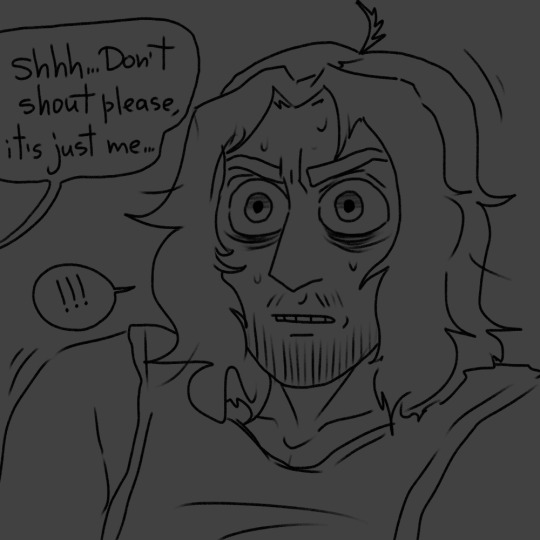

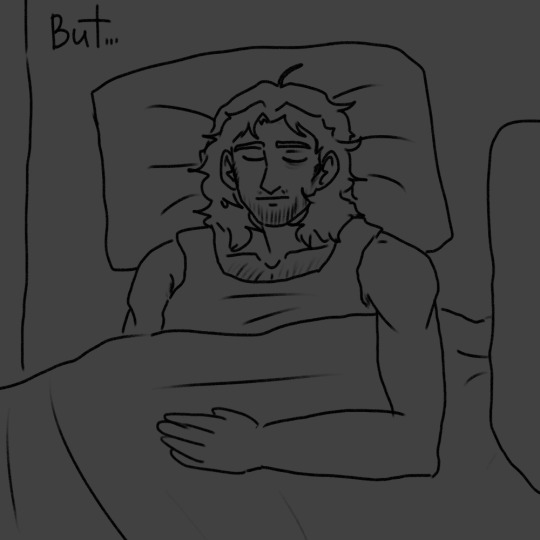
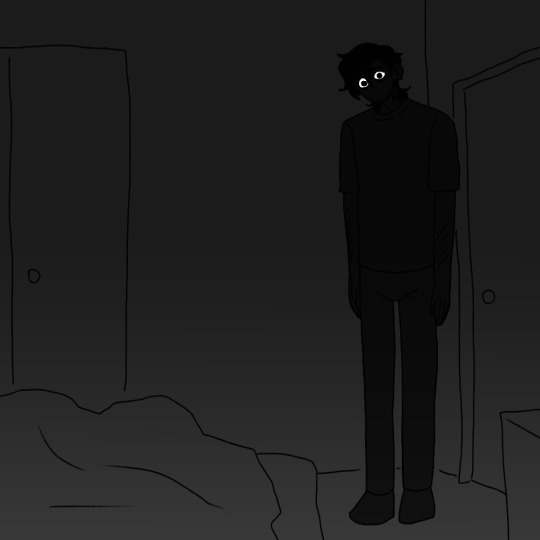


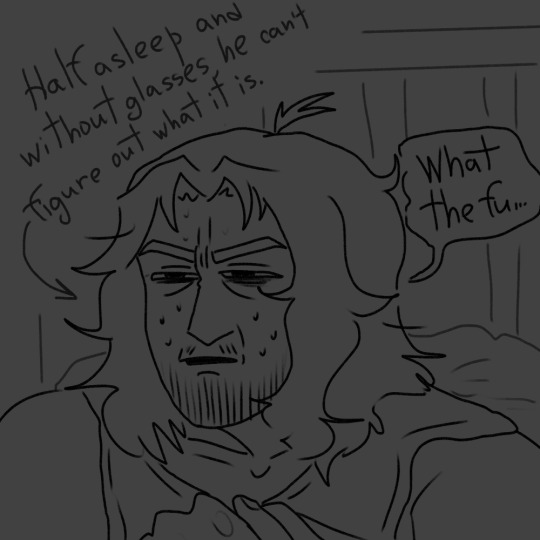
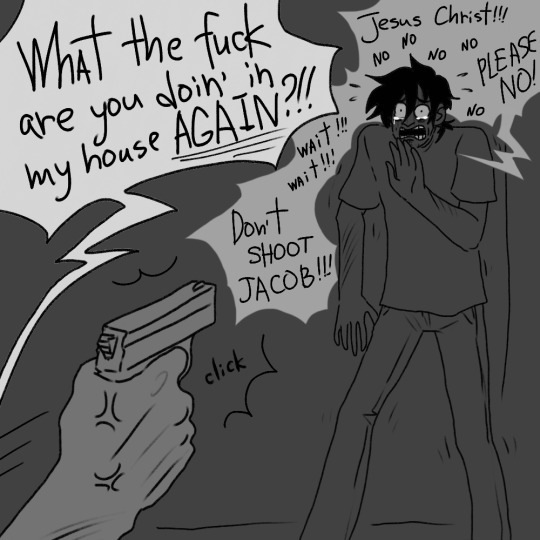
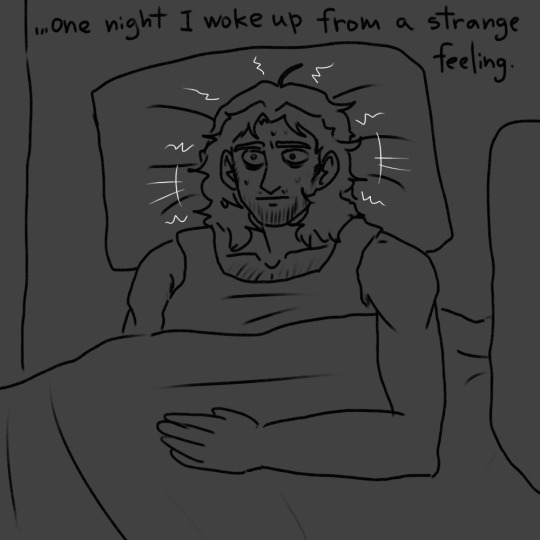
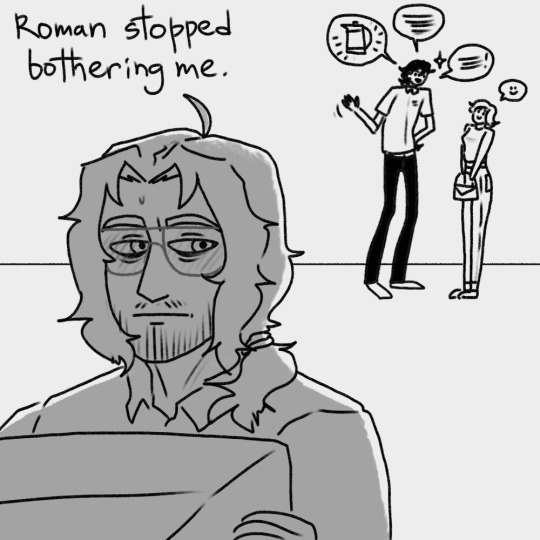
#stalking a stalker lfl#lurking for love au#jacob alden lurking for love#jacob alden#original character#roman kraus lfl#roman kraus#lurking for love#art#digital art#my art🐀#au
192 notes
·
View notes
Text
FFDR+
Chapter 1, pages 1-9
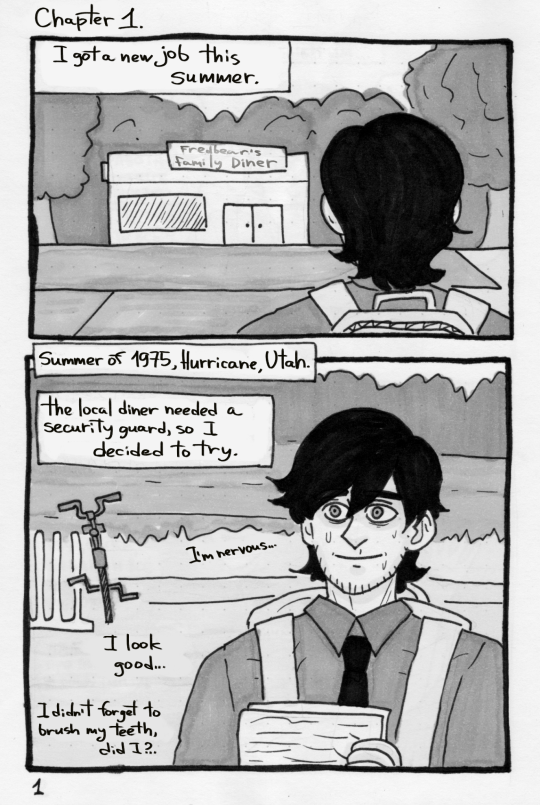
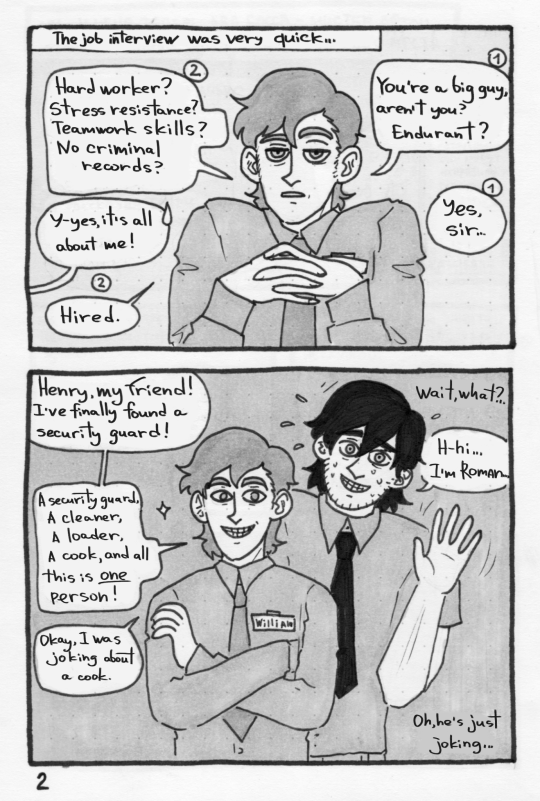

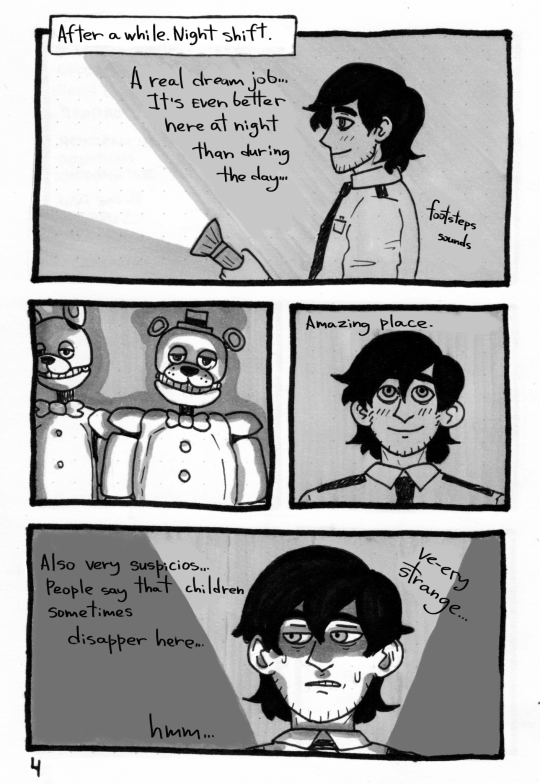

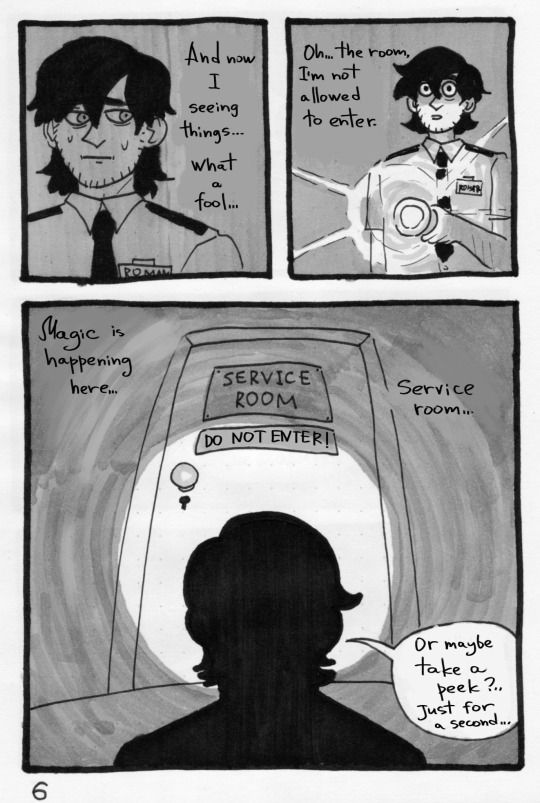

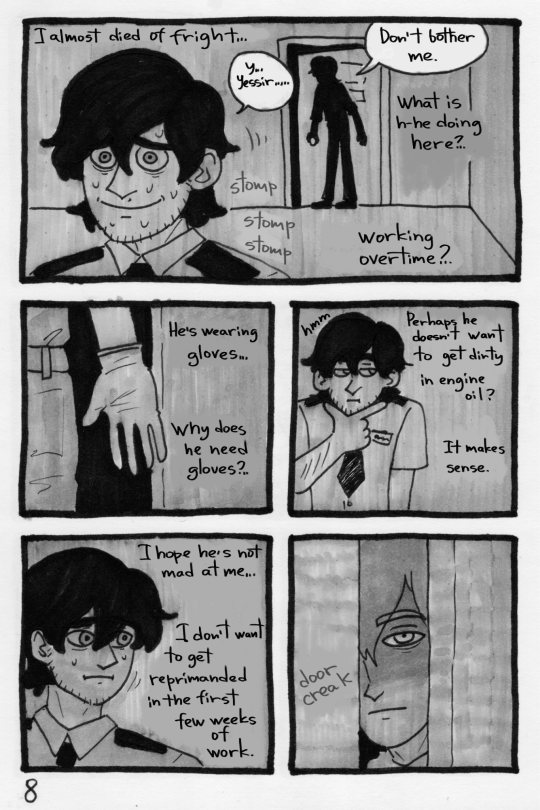

Let's goooooo 🐰
#FFDR plus#FFDR#Fredbear's family diner routine#webcomic#comic#fnaf comic#william afton#henry emily#roman kraus#original character#fredbear's family diner#traditional comic#five nights at freddy's#FNAF#FFDR+
31 notes
·
View notes
Link
#Courts#Headlines#Status#Adi Martinez-Roman#American Samoa#Contextomy#Cristina Ponsa-Kraus#Guam#incorporated territories#Insular Cases#legal fiction#Neil Weare#Northern Mariana Islands#Puerto Rico#Rafael Cox Alomar#Supreme Court of the United States#Unincorporated Territories#US Virgin Islands
0 notes
Text
The 'serious' contemporary hetero-male novel is a thinly veiled Story of Me, as voraciously consumptive as all of patriarchy. While the hero/anti-hero explicitly is the author, everybody else is reduced to 'characters.'
Chris Kraus, from I Love Dick
#narcissism#male authors#steal from life#patriarchy#writing#writer#autofiction#roman a clef#quotes#lit#words#excerpts#quote#literature#chris kraus#i love dick
0 notes
Text
DJKT JCS review (Apr. 2nd 2024)
Here's a short review (for my standards) of just what happens onstage during the recently premiered production of Jesus Christ Superstar in Pilsen. Cut is for length.
The main cast for the show on the day were: Pavel Klimenda (Jesus of Nazareth), Dušan Kraus (Judas Iscariot), Charlotte Režná (Mary Magdalene), Pavel Klečka (Pontius Pilate), Jan Holík (King Herod), Jan Fraus (Caiaphas), Radim Flender (Annas), Jaroslav Panuška (First priest/Company), Lukáš Jindra (Second priest/Company), Roman Krebs (Third priest), Martin Holec (Peter), Jakub Gabriel Rajnoch (Simon Zealotes), Apolena Veldová (Virgin Mary/Jesus' Mother)
Pre-show: The show starts all the way in the theatre lobby, where instead of DJKT’s usual ads for other of their shows, all the TVs show footage of the Roman in-show propaganda posters, which are sometimes interrupted with footage of Jesus and Judas. Once you enter the auditorium, you can see the set fully exposed, lights running left and right through the first few rows, the fog machine softly running and all the screens onstage showing in-show Roman propaganda posters, all of them talk about the strength and glory of the empire, how the empire protects It’s inhabitants and preserves the empire’s culture. On the graffitti covered metal fence are tacked on a few scrunched up posters with Jesus on them. All throughout, you can hear a soft mechanical whirring in the background. As the lights dim, Jesus and Judas slowly come onstage, followed by the apostoles, from the right offstage door and observe the set and the propaganda. Jesus raises his hand in a sudden motion and the mechanical whirring in the background stops and the overture starts.
Overture: During the first notes of the overture, you can hear a few women offstage screaming for help, presumably from Roman guards. Jesus pulls out a tablet from the backpack he’s carrying and starts tapping into it. The propaganda posters start glitching as Jesus evidently starts hacking into the system and are soon replaced with slightly glitchy footage of Jesus, immaculately dressed and presented as the ideal savior, complete with soft rays of sunlight in the background. The apostles start setting up camera equipment and ringlights around Jesus, preparing to shoot more footage. One of them starts fixing Jesus’s hair with a can of hairspray and adjusting his clothes, so that he looks immaculate, just like the perfect savior of the world should look like and not a single hair is out of place. Judas only looks on disdainfully as he once in a while takes a hit from his vape pen. During the middle of the overture, a Roman guard comes in from the other side of the stage with two women and forces them to take down the posters with Jesus from the fence. Jesus once again starts intensely tapping into his tablet, choosing which footage of him gets shown onscreen until the footage shown is without a single glitch and Jesus looks proudly at the work he accomplished.
Heaven on Their Minds: Evidently fed up with Jesus’s entire spiel, Judas takes away his tablet, turns it off and yeets it onto the ground in frustration. Jesus and all the other apostles give him a look of „Bro, what is wrong with you“ before Jesus takes his tablet again and gets back to working on it. All through the number, Judas looks longingly at Jesus and looks like he’s trying to explain and reason with Jesus that his entire plan is getting out of hand and dangerous. Jesus just waves off Judas’s warnings and runs offstage.
What’s the Buzz: Jesus excitedly leads onstage two ensemble women, presumably as new members of his team. He is evidently still innocently really excited about using his built up infuence to change the world for the better. The metal fence is drawn away, revealing the squat/campsite of Jesus’s followers. Mary Magdalene is already waiting there for the group to return. Jesus whips off his coat and gratefully lays his head in Mary‘s lap and croons in delight as she cools off his forehead and cards through his hair.
Strange Thing, Mystifying: As Jesus is lounging, Judas is evidently very fed up with all the attention that is not being given to him, but to Mary. He kneels down to Jesus and tries to reason with him that so openly associating with Mary as a former sex worker will only harm the entire image and brand Jesus is presenting publically. Mary is very hurt by this. Jesus jumps up from Mary’s lap, upset that Judas dares to offend Mary and as he lectures his apostoles that only one who is innocent should throw rocks into those like Mary, Judas picks up a crushed can and wants to throw it into Mary, but one „wtf bro?“ look from Jesus stops him. It’s evident that already here, Jesus is slowly starting to lose hope whether his apostoles truly mean things as seriously as he does
Then, We Are Decided: The apostle gang along with Jesus, Judas and Mary settle down around their tents in the dim further stage. The only thing breaking the dimness is the soft blue light from Jesus’s tablet as he continues scrolling through it. Annas pushes onstage a wheelchair-bound Caiphas and helps him wash up as they scheme how to get rid of Jesus.
Everything’s Alright: Attention back on the group. Mary notices a medicine seller in the background and taking off her silver tassel necklace along with snatching some small thing from the camp, she sells them in trade for an ointment. She takes Jesus away from the main tent camp (much to Judas‘ exasperation), but he still isn’t paying full attention to her, so she takes away his tablet and makes him lay down onto a pillow made out of his coat and backpack, where she can rub the ointment into his face. Judas starts off on Mary for both unwisely spending the group’s money and for being jealous of all the attention Jesus gives her. Despite Mary’s continuous attempts to get Jesus to rest, his attention is constantly drawn elsewhere, either to longingly staring at Judas or to a poor crippled woman upstage, who he runs off to heal with his touch. In the end, Mary gets Jesus to settle down next to the tents, but he still keeps on tapping into his tablet even as the lights go dim.
This Jesus Must Die: Caiaphas and Annas along with the priests appear up on a construction overlooking the tent camp, where Jesus and everyone else rest. They are now dressed in their full uniform and plot their next step as the screens show what looks like security camera footage of the group arriving in the half devastated city
Hosanna: Jesus and co are chilling in front of their tents when excited crowd of Jesus’s followers approaches them and sings praises for him. They take Jesus up on their shoulders and carry him to a pile of old bottle crates and other old stuff to preach to them from higher up, but he kneels down to them. Amid the crowd throughout the entire play can be seen Jesus’s mother, who is an added silent role within the production. She looks on what is happening to her son, offers a distant emotional support to him, but never interferes.
Simon Zealotes: After Hosanna, Simon is evidently not content with how conventional and tame it was, so with the words „You call THIS a hosanna?“ he leads the apostles and Jesus’s followers in a wild and energetic dance, singing about how they want Jesus to make love to them. Simon looks like has the full intent of destroying property as he sings of how Jesus can easily rule over Rome thanks to his influence. Jesus still stands on the spot he was raised up to by his followers and watches them with slowly escalating horror on his face. At first, he looks like he thinks all of Simon’s talk is just fun and jokes, but he slowly starts realizing that Simon is earnest about what he says and that despite all his peaceful and calm intent with only the hope to help perhaps help as many people as he can has started turning against him and his followers have started to radicalize and there is no way to stop them
Poor Jerusalem: Jesus calms down the raging mob of his followers and reflects on how not a single of them will ever truly understand him and the pressure that being known and famous brings with it. Judas wants to offer him consolation, but Jesus walks sadly away.
Pilate’s Dream: Pilate’s bed, full of ornamental pillows, is raised up from under the stage and he wakes up with a sudden jolt and recounts his nightmare, as if slowly recounting it.
The Temple: The set is flooded with the ensemble offering their wares and dancing around. Into this wild scene arrives Jesus, closely followed by Judas, and is evidently horrified at the scene. Jesus pulls out his phone to document what is happening. Judas tries to reason with him, try to make him put down the phone and lead him away from the scene, but Jesus is firmly set on what he wants to do. He starts filming the sellers, running around the set to get each of them on video in detail before he yells them out. After everyone leaves, Jesus looks very guilty over what he did, both because he broke his principles of being the kindest person he can be, but also because this might hurt his reputation by not aligning with the persona he and his team created. Slowly, the sick people slither onstage from the shadows and beg Jesus to touch and heal/help them. Jesus tries to ignore them and emptily stares into the audience with a sad gaze, but as the pleas get more insistent and he realizes there is no way to Ignore them, but also no way to help all of them, he starts breaking down into tears and desperate screams. He runs away from the crowd far stage right after he yells at them to heal themselves and flops down onto the ground, evidently holding back tears and trying to hide them from anyone seeing them.
Everything’s Alright (reprise)/I Don’t Know How to Love Him: Mary, now with a shawl wrapped around her shoulders, tries to console Jesus, but he only hollowly answers her as he continues being huddled in the corner of the stage, hugging his knees. Mary Is evidently conflicted about her emotions towards Jesus, because she does visibly care deeply for him, but sees that he might never reciprocate her feelings. But, she bursts out into dance and appears to find happiness that she can be near him and his friend, and that thanks to Jesus, she has found a more fulfilling version of herself.
Damned for All Time/Blood Money: Judas looks very reluctant over his decision, pacing left and right over the set and looks rather scared of Annas and Caiaphas as they crowd around him. Annas holds out a red pouch of money in offer to Judas and only very reluctantly, Judas, with an outstretched hand under the pouch, but not touching it, tells them where to find Jesus.
Entr’acte: Jesus has one of his apostoles bring onstage a plastic foot basin and a gas can with water. He leads an apostole and then Peter to the basin and washes their feet. He then approaches Mary and helps her take off her shoes and stockings, while a few of the apostoles hoot as Mary takes the stockings off, and also washes her feet. Then, he approaches Judas, gently helps him remove one of his shoes and washes one of his feet.
The Last Supper: Judas helps set up a makeshift dining table out of crates and a wide board. The apostles sit around it and Jesus sits at the head, breaking up a loaf of bread into twelve chunks with his hands as the apostles pour one another wine. However, as Jesus sees his apostles eagerly bite into the bread as soon as it’s handed to them, without stopping to pray or discuss, a wave of melancholy goes over him. He sees that he himself is the only person there who actually cares about helping people and the world. He leaves the table to collect his thoughts, but even then, he is followed by Peter with a voice recorder, who is trying to catch everything that could be used for their campaign. He nervously paces around the set and throws off his coat as he says how he knows none of the apostles truly care for him, before quickly snatching up his tablet and to the protest of all the apostles deleting all files from it. When he says that he knows one of them will betray him, Judas steps forward, at first talking to Jesus very matter-of-fact-ly, as if he is trying to get this conversation over and done with as soon as possible, but he starts loosing his composure as the argument continues. Jesus is very hurt by the betrayer being Judas, seemingly berating himself for not realizing sooner that Judas would be the one to do this, and is trying to hold back tears all through their argument. Jesus tearfully yells at Judas to go away, but immediately clings to and embraces him. Judas embraces him in return and they sink to the ground, looking like they just want to stay in the embrace. Judas slowly separates himself and turns to leave, but as if trying to prove a point and justifying his decision, he paces around Jesus, who is still sitting slumped on the ground, eyes watery and unfocused. He tries to reason that Jesus was already hurling towards his demise and the broken state he’s now in is only a proof of that he Is not humankind’s savior, as if he’s trying to drive the knife deeper to mask that he doesn’t want to do this. Jesus once again brokenly yells at Judas to go and Judas reluctantly complies. The apostles lay down to sleep in their tents, leaving a broken Jesus alone onstage, who has been tearfully gazing in the direction Judas left.
Gethsemane: There are two stops intentionally included in the music. One as Jesus is about to start singing and the other before the first „Then I was inspired…“. Each time, the music stops as Jesus looks back towards where the orchestra is situated behind the set and he looks back almost in a plea that he doesn’t want to do this, that he doesn’t want to go through with the story and become a perhaps pointless victim all for wanting to help people. He starts almost pleading with God, but quickly turns spiteful and angsty over God deciding for him how his life will go. As he questions God what is the reason for him having to die, he climbs up the set structure, as If trying to get closer to him. Once he decides that he will do as God wants it and he will die, he screams in spite for God to watch on the destruction he’s about to cause. He ends the song bitterly resigned with tears in his eyes.
The Arrest: Judas arrives with guards in tow and approaches Jesus alone, talking to him in an almost mocking manner to mask his pain over what he’s about to do. The kiss is a gentle and brief one on the lips, as if Judas wants to get over with it as quickly as possible, but Jesus visibly leans into it with teary eyes. Jesus’s delivery of „Must you betray me with a kiss?“ with an emphasis not on the betrayl, but on the kiss and him putting a little pause before the kiss part, as it it’s hard to say out loud. The guards step forward and Jesus willingly offers them his hands to tie up. Peter tries to interfere and hits one of the guards on the head. Jesus immediately takes away his weapon while berating him and turning to the guard, he touches the wound to heal it. Annas and Caiaphas arrive. Through the scene, Judas has been trying to hide in the left corner of the stage, trying to look as if he had no part in this, until Annas directly thanks him for helping in arresting Jesus, upon which he frightfully departs.
Peter’s Denial: A few ensemble members are warming by a trashcan fire, when Peter goes by them, trying to hide his face with the hood of his yellow raincoat. He tries to play off the first denial with a smile and energy of „this Is just a stupid coincidence“, but his third denial is really angry and desperate. Mary appears at the back of the stage, worried over what Peter just did, but tries to comfort him when she sees how much it hurt him to deny knowing Jesus.
Pilate and Christ: The set changes to Pilate’s palace, complete with two green wall chandeliers made out of used bottles. Jesus is brought forth in front of Pilate, who is in his full opulent fur trimmed costume. For the questioning, Jesus is tied to the bars of a cage, which looks to be connected to electricity and made for torture via electroshocks, the guards bring forth. Mary and Peter can be seen in the background, being held back by guards. Jesus is unbound from the cage as Pilate sends him off to Herod.
King Herod’s Song: Into the earlier entry door of Pilate’s palace backs in a beaten up car with Herod sitting on the smashed in car hood. The entire song, Herod relishes in the destruction and chaos he’s causing and in traumatizing Jesus. Specifically, he pulls out the cut off head of John the Baptist from a fridge they have on set and throws it around with his minions like a ball, before rolling it onto the ground. Jesus immediately recognizes John in the head and breaks down onto the ground crying and whispering John’s name, as if trying to apologize to his spirit for being a contributing factor in why Herod executed him. Herod also very roughly slaps Jesus across the face before leaving.
Could We Start Again Please: The graffiti covered metal fence is drawn back over the set as Mary, Peter and the apostles come forth. Mary has her shawl drawn up over her hair and leads the group in a collective prayer, seemingly filling in Jesus’s place as the spiritual leader of the group. The motions the group pray with are similar to the way early Christians prayed, with both their hands raised to the sky. Mary is close to tears by the end of the number.
Judas’s Death: Judas runs onstage as the screens show footage of Jesus getting brutally beaten up by the guards, with repeated close ups on his bloodied and bruised face with tears pooling in his eyes. Judas looks very remorseful over what happened, but he tries to hold himself together all through the „I Don’t Know How To Love Him“ part. By the end of the number, he is bitterly and manically laughing up at God as he is about to hang himself. God might have had control over the narrative, but this way, Judas feels like he is taking his fate into his own hands.
Trial before Pilate: Jesus is once again brought forth, visibly weak and beaten up. Pilate circles him as a guard with a turned on phone walks in front of him and „livestreams“ the entire trial onto the big screens onstage. Mary can once again be seen in the background, being held back by the guards and looking on in worry. The crowd in the back part of the stage demands Pilate sentence Jesus to crucifiction, even when Jesus is visibly barely managing to stand and brutally beaten up. To calm the crowd, Pilate has Jesus flogged, where the guards drag him into the cage, tear away all his clothes and tie him to the bars facing away from the audience. With each hit, the lights in the room flicker. After 39 times of being hit, Mary manages to fight her way through the guards and as Jesus’s ties are loosened, she gives him a loin cloth to cover himself. As Jesus turns back towards the audience, his chest and face are visibly bloodied. Pilate tries to empathetically reason and come up with a way to somehow save him. Jesus barely, but chillingly whimpers the „Everything is fixed and you can’t change It“. The cross, which looks to be made of old iron, gets dragged onstage, with a blank cardboard plaque above the head. Pilate is handed a can of blue spray paint and paints on the Initials JC as he tells his verdict.
Superstar: A red cloth is placed around Jesus’s shoulders and a crown of thorns is forced onto his head as Judas, now wearing a red turban/headwrap instead of the previously gray one, and the soul girls, dressed as angels all in red and with giant wings, are rolled in onstage. Judas and the angels dance around and sing as the entire carrying of the cross Is recreated. Jesus falls under the cross three times, he is followed by a crowd of weeping women where he notices his mother, one of the apostles tries to help him carry the cross, he is offered a cloth to wipe his face into by Veronica. At one point, as Jesus is carrying the cross, Judas starts dancing in front of him and sort of leading him where he should go. During the final chorus, Jesus falls a third time, but away from the audience’s gaze.
Crucifiction: The cross is raised up, Jesus hanging on it with bright stage lights behind him. He whimpers on it, sometimes almost incoherently through the pain. He calls weakly his mother, who has to only watch from down below and can’t save him. All she can do is calm a weeping Mary in her arms. Jesus dies with a final whispered „Father, into your hands a commend my spirit“ and remains limply hanging on the cross.
John Nineteen:Forty-One: The cross is lowered and Peter with one other apostle take Jesus’s body off of the cross. They lay him into his mother’s arms in a pose similar to Pieta sculptures, so she can say her goodbye and then lay him on the ground, letting Mary say her goodbye. They cover up Jesus’s body with a sheet, but after they remove it after a few seconds, but Jesus’s body has disappeared. Everyone onstage lokes into the skies as they sing out the last notes.
#jesus christ superstar#jcs#djkt#djkt jcs#such an incredible show to witness#djkt once again proved they know how to make great musical productions#Adri rambles
11 notes
·
View notes
Text
The land “from the river to the sea,” to use the now-ubiquitous slogan, has been known as Palestine only twice before. First, the Roman Emperor Hadrian used “Palestina” as a way of suppressing Jewish resistance to his imperial rule. Second, it was used under the British Mandate, which was entrusted to Britain with the purpose of “the establishment in Palestine of a national home for the Jewish people.”
In both cases, it was understood that “Palestine” simply denoted the territory where there had been, or would be, a Jewish homeland. This is why the League of Nations, in establishing the Mandate, did so to “give recognition to the historical connection of the Jewish people with Palestine,” thereby forming “the grounds for reconstituting the Jewish people’s national home in that country.” This is also why local organizations at the time freely used the word “Palestine” in connection to entirely Jewish entities: The Palestine Post, for instance, which later became The Jerusalem Post, or the Palestine Philharmonic, later the Israel Philharmonic. Football associations with players bearing names such as Kastenbaum, Friedmann, Nudelman, and Kraus, as well as coins, bore the name Palestine (but always with a mention of “Eretz Israel,” the Land of Israel).
Nor was that all. The Mandate gave Britain the option to separate the territory east of the River Jordan out of the area mandated for a Jewish home. What became Transjordan, and later Jordan, was forbidden to Jewish settlement. The remaining areas are, fantastically, now called “historic Palestine.” As Shany and I observed, “they are ‘historic’ only insofar as they lasted for barely three decades, were governed by a European superpower, and delimited as the future national home for the Jewish people.”
8 notes
·
View notes
Text


If you’re new to my work (which you might be because I’m new to Tumblr), I’m a comic artist. Biggest comics I’ve drawn so far are:
The Autumnal, a nearly 200 page horror comic by writer Daniel Kraus (The Shape of Water), myself, and colored by Jason Wordie, lettered by Jim Campbell, and published by Vault Comics.
House of Slaughter (Vol 1), a spin-off of critically acclaimed series Something Is Killing The Children, written by James Tynion IV and Tate Brombal, drawn by me, colored by Miquel Muerto, and lettered by Andworld. Published by BOOM! Studios.
I’m currently working on 2 comic series that are coming out monthly, also from Vault and Boom:

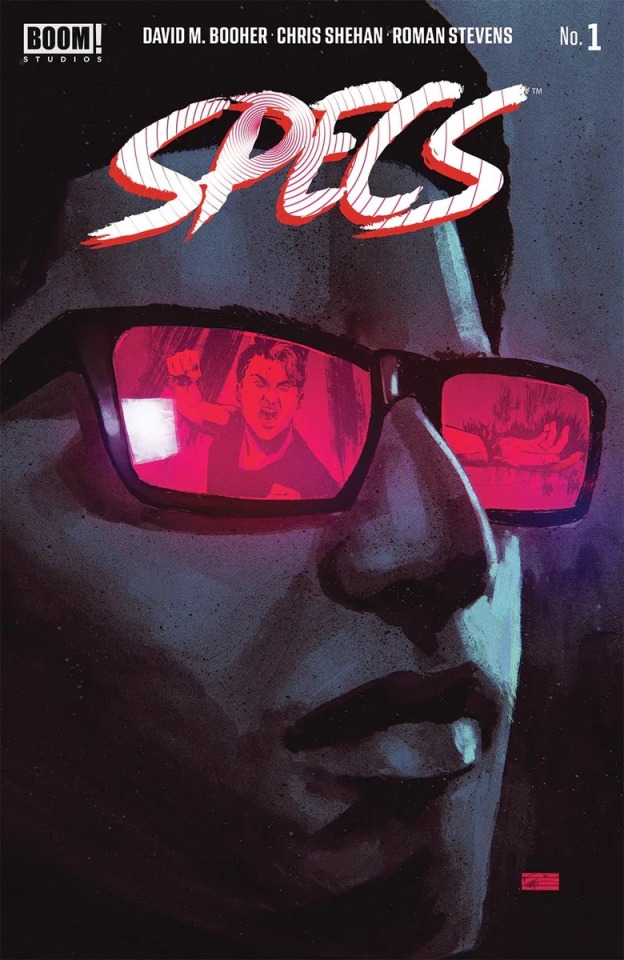
Nightfall Double Feature is a horror double feature, 2 ongoing horror titles in one book each month. 60 pages of comic in each issue. The story I’m doing in that is called Denizen, it’s written by DB Andry and Tim Daniel, colored by Jason Wordie, and lettered by Andworld. Published by Vault Comics.
Specs is a horror comic by writer David Booher (Canto), drawn by me, colored by Roman Stevens, and lettered by Jim Campbell. Published by BOOM! Studios.
Other than that, I’ve contributed to anthologies like Young Men In Love, Bi Visibility Vol 2, and I’ve done covers for almost every publisher.
44 notes
·
View notes
Text
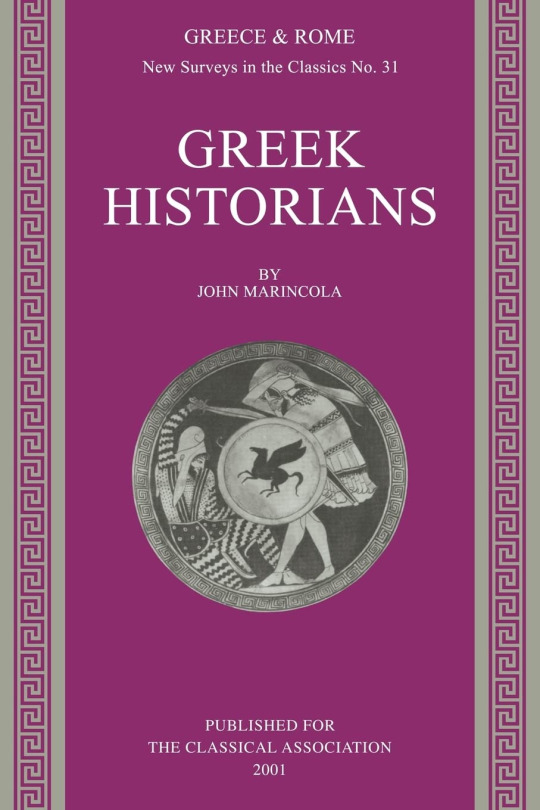
This survey of recent work on Herodotus, Thucydides, and Polybius focuses on new developments in the study of Greek historiography and synthesises some of the most important research from the last thirty years. There is a detailed treatment of each writer, with an emphasis on analysis of the historians' sources, their narrative methods, and their use of speeches. Also examined are the structure and themes of each man's work, together with consideration of the way each historian employs characterisation. The book provides a full bibliography of recent work done mainly (but not exclusively) in English, and suggests future directions that the study of these historians may take. It will be of interest to upper-level students and scholars who would like an overview of recent trends in the study both of the historians themselves and of ancient Greek historiography in general.
Publisher : Cambridge University Press; 1st edition (21 Aug. 2008)

Leon Golden Professor of Classics, Florida State University
Education: BA in Classical Studies, 1979
John Marincola specializes in Greek and Roman historiography and rhetoric. He is the author of Authority and Tradition in Ancient Historiography (1997), Greek Historians (2001), and (with Michael A. Flower) Herodotus: Histories Book IX (2002). He has edited A Companion to Greek and Roman Historiography (2007) and Oxford Readings in Greek and Roman Historiography (2010). He has co-edited (with Carolyn Dewald) The Cambridge Companion to Herodotus (2006) and (with C. S. Kraus and C. B. R. Pelling) Ancient Historiography and its Contexts:Studies in Honour of A. J. Woodman (2009). He has revised the Penguin editions of Herodotus’ Histories (1996; further revised edition, 2003) and The Rise and Fall of Athens (forthcoming);and he has translated Xenophon’s Hellenica and fragments of the Oxyrhynchus historian for The Landmark Xenophon’s Hellenica (2009). He has written articles on many Greek and Roman historians and is currently at work on a book on Hellenistic historiography. He is the current Book Review Editor of Classical Journal and co-editor (with John Moles) of Histos.
Source: https://www.classics.upenn.edu/people/john-marincola
9 notes
·
View notes
Text
evening crowd - I’m doing a sibling poll a la iconic yaoi poll. under the cut are my choices as of now. feel free to send more recommendations in
also, does anyone have any suggestions for what to call it besides ‘sibling showdown’?
Killua, Alluka, and Nanika Zoldyck
Wei Wuxian, Jiang Cheng, and Jiang Yanli
Wen Ning and Wen Qing
Edward and Alphonse Elric
Ritsu and Shigeo Kageyama
Lauis and Farlyn Thornden
Yukina and Hiei
Dee and Dennis Reynolds
Zuko and Azula
Vi and Jinx/Powder
Luke Skywalker and Leia Organa
Thor and Loki (MCU)
T’challa and Shuri (MCU)
Violet, Kraus, and Sunny Baudelaire
Wirt and Greg
Moon Gang-tae and Moon Sang-tae
Vax‘ildan and Vex’ahlia
Jimmy McGill/“Saul Goodman” and Chuck McGill
Kendall, Shiv, Roman, and maybe Connor Roy
Katniss and Primrose Everdeen
Mario and Luigi
Fleabag and Claire
Finn and Jake
Mabel and Dipper
Boromir and Faramir
Phineas and Ferb
Wednesday, Pugsley, and Pubert Addams
and these are my second choices– either I don’t think they’d be popular enough to be comparable to the choices above, or I don’t know enough about them
Taako and Lup
Kacho and Fugesto
Em and OJ
Lelouch and Nunnally
The Bennet Sisters
note: no winchesters will be included
note (2): I know I listed two sets of siblings for one show but there are extenuating circumstances for that one (it has five sets of significant siblings, most of my followers like this show enough for me to think they won’t mind, and also it’s my poll)
11 notes
·
View notes
Text
no okay the other thing that’s so fascinating about roman’s particular eating habits. and i don’t think the show is really doing this on purpose but it’s still there so whatever. is that you do see him eating fruit, specifically, and like... fairly often, relative to the other characters. it always reminds me of those cases of ‘fasting girls’ in the middle ages and early modern period because so many of those cases will report that they only/specifically ate fruit (often berries iirc?) and they’d have all these reasons. like fruit wasn’t ‘sustenance’, so their bodies were still ‘unsullied’ by food; it was insubstantial in a way that other foods weren’t; its sweetness often recategorised it and made it not ‘count’. and then some of these girls also just had their own idiosyncratic logics about it as well
like i’m not saying roman is a medieval fasting girl, lmao, but i do think it’s an interesting window into how not-eating can be slotted into so many different cultural and social narratives, and different meanings can be made from it. fasting girls typically portrayed themselves as transcending the body (by destroying it... naturally) but also as, like, victims of their own lack of appetite. often that lack was construed as being a gift or curse from god, hence the phrase “anorexia mirabilis” (miraculous lack of appetite)
and then like, fasting girls weren’t quite the same as, eg, a catholic saint like augustine, who didn’t eat (or drink water, which some fasting girls did and others didn’t) specifically because he sought a higher spiritual pleasure than the simple bodily enjoyment of sating his hunger. he wasn’t seeking pain, per se, but he did feel that physical pleasure was at best a distraction from his worship, and at worst a self-indulgent perversion of his spiritual nature. and then augustine, in turn, wasn’t quite the same as the protestant self-denialist dietary reformers of, eg, 19th-21st century america, who often did/do seek suffering for its own sake in a very pointed way**
and then there are others still: for example, hunger artists who starved themselves as a public art form. in kafka’s short story, the hunger artist does experience hunger and pain and misery, but also can’t find a food he likes. he’s ultimately replaced by a panther who “wants for nothing”—that is, the not-eating is relocated to a discourse of desiring. or, simone weil ‘feeding on light’ rather than food, which obviously draws from stuff like augustine but is configured with a distinct philosophical understanding of god. or even, like, chris kraus’s “aliens & anorexia” which draws from weil but is a very different attempt to speak and recreate the language of not-eating (& also ties it to sex and love and aliens... actually i think romangirls [gn] should read that book)
and then all of these are distinct from our current dsm reading of not-eating, which toggles between 1) it’s a Brain Sickness that needs a medical cure or 2) it’s an act of free will in pursuit of [control/beauty/love/etc]. and this can be traced to maudsley’s case studies, but also to the early 19th century psychiatrists (aliénistes) who laid a lot of the modern groundwork re: the stomach-brain connection, the use of force-feeding to treat various illnesses, etc
anyway like. no two people who don’t-eat are going to experience that the exact same way, but there are still these sorts of families of experiences. archetypal narratives i guess. and i do get a kick out of the thought that roman’s experience of not-eating is, at least cosmetically, a little medieval. though in his case, obviously he also has a lot of psychosexual baggage (“i eat you, you eat me”) and like a million other things going on lol
**max weber kind of sucks and this divide is more complicated and historically contingent than just catholic vs protestant but whatever
#sorry for collapsing all of american dietary reform into one sentence spanning 3 centuries#anyway this is part of what i mean when i say that roman's eating issues#being collapsed into a dsm narrative is limiting#you eat me i eat you
15 notes
·
View notes
Text
THE SOFT AMERICAN BY: John F. Kennedy President of the United States
Beginning more than 2,500 years ago, from all quarters of the Greek world men thronged every four years to the sacred grove of Olympia, under the shadow of Mount Cronus, to compete in the most famous athletic contests of history—the Olympian games.
During the contest a sacred truce was observed among all the states of Greece as the best athletes of the Western world competed in boxing and foot races, wrestling and chariot races for the wreath of wild olive which was the prize of victory. When the winners returned to their home cities to lay the Olympian crown in the chief temples they were greeted as heroes and received rich rewards. For the Greeks prized physical excellence and athletic skills among man’s greatest goals and among the prime foundations of a vigorous state.
Thus the same civilizations which produced some of our highest achievements of philosophy and drama, government and art, also gave us a belief in the importance of physical soundness which has become a part of Western tradition; from the mens sana in corpore sano of the Romans to the British belief that the playing fields of Eaton brought victory on the battlefields of Europe. This knowledge, the knowledge that the physical well-being of the citizen is an important foundation for the vigor and vitality of all the activities of the nation, is as old as Western civilization itself. But it is a knowledge which today, in American, we are in danger of forgetting.
The first indication of a decline in the physical strength and ability of young Americans became apparent among United States soldiers in the early stages of the Korean War. The second came when figures were released showing that almost one out of every two young American was being rejected by Selective Service as mentally, morally or physically unfit. But the most startling demonstration of the general physical decline of American youth came when Dr. Hans Kraus and Dr. Sonja Weber revealed the results of 15 years of research centering in the Posture Clinic of New York’s Columbia-Presbyterian Hospital—results of physical fitness tests given to 4,264 children in this country and 2,870 children in Austria, Italy and Switzerland.
The findings showed that despite our unparalleled standard of living, despite our good food and our many playgrounds, despite our emphasis on school athletics, American youth lagged far behind Europeans in physical fitness. Six tests for muscular strength and flexibility were given; 57.9% of the American children failed one or more of these tests, while only 8.7% of the European youngsters failed.
A Consistent Decline
Especially disheartening were the results of the five strength tests: 35.7% of American children failed one or more of these, while only 1.1% of the Europeans failed, and among Austrian and Swiss youth the rate of failure was as low as .5%.
As a result of the alarming Kraus-Weber findings President Eisenhower created a Council on Youth Fitness at the Cabinet level and appointed a Citizens Advisory Committee on the Fitness of American Youth, composed of prominent citizens interested in fitness. Over the past five years the physical fitness of American youth has been discussed in forums, by committees and in leading publications. A 10-point program for physical fitness has been publicized and promoted. Our schools have been urged to give increased attention to the physical well-being of their students. Yet there has been no noticeable improvement. Physical fitness tests conducted last year in Britain and Japan showed that the youth of those countries were considerably more fit than our own children. And the annual physical fitness tests for freshman at Yale University show a consistent decline in the prowess of young American; 51& of the class of 1951 passed the tests, 43% of the class of 1956 passed, and only 38%, a little more than a third, of the class of 1960 succeeded, in passing the not overly rigorous examination.
Of course, physical tests are not infallible. They can distort the true health picture. There are undoubtedly many American youths and adults whose physical fitness matches and exceeds the best of other lands.
But the harsh fact of the matter is that there is also an increasingly large number of young Americans who are neglecting their bodies—whose physical fitness is not what it should be—who are getting soft. And such softness on the part of individual citizens can help to strip and destroy the vitality of a nation.
For the physical vigor of our citizens is one of America’s most precious resources. If we waste and neglect this resource, if we allow it to dwindle and grow soft then we will destroy much of our ability to meet the great and vital challenges which confront our people. We will be unable to realize our full potential as a nation.
Throughout our history we have been challenged to armed conflict by nations which sought to destroy our independence or threatened our freedom. The young men of America have risen to those occasions, giving themselves freely to the rigors and hardships of warfare. But the stamina and strength which the defense of liberty requires are not the product of a few weeks’ basic training or a month’s conditioning. These only come from bodies which have been conditioned by a lifetime of participation in sports and interest in physical activity. Our struggles against aggressors throughout our history have been won on the playgrounds and corner lots and fields of America.
Thus, in a very real and immediate sense, our growing softness, our increasing lack of physical fitness, is a menace to our security.
However, we do not, like the ancient Spartans, wish to train the bodies of our youth to make them more effective warriors. It is our profound hope and expectation that Americans will never again have to expend their strength in armed conflict.
But physical fitness is as vital to the activities of peace as to those of war, especially when our success in those activities may well determine the future of freedom in the years to come. We face in the Soviet Union a powerful and implacable adversary determined to show the world that only the Communist system possesses the vigor and determination necessary to satisfy awakening aspirations for progress and the elimination of poverty and want. To meet the challenge of this enemy will require determination and will and effort on the part of all American. Only if our citizens are physically fit will they be fully capable of such an effort.
For physical fitness is not only one of the most important keys to a healthy body; it is the basis of dynamic and creative intellectual activity. The relationship between the soundness of the body and the activities of the mind is subtle and complex. Much is not yet understood. But we do know what the Greeks knew: that intelligence and skill can only function at the peak of their capacity when the body is healthy and strong; that hardy spirits and tough minds usually inhabit sound bodies.
In this sense, physical fitness is the basis of all the activities of our society. And if our bodies grow soft and inactive, if we fail to encourage physical development and prowess, we will undermine our capacity for thought, for work and for the use of those skills vital to an expanding and complex America.
Thus the physical fitness of our citizens is a vital prerequisite to America’s realization of its full potential as a nation, and to the opportunity of each individual citizen to make full and fruitful use of his capacities.
It is ironic that at a time when the magnitude of our dangers makes the physical fitness of our citizens a matter of increasing importance, it takes greater effort and determination than ever before to build the strength of our bodies. The age of leisure and abundance can destroy vigor and muscle tone as effortlessly as it can gain time. Today human activity, the labor of the human body, is rapidly being engineered out of working life. By the 1970’s, according to many economists, the man who works with his hands will be almost extinct.
Many of the routine physical activities which earlier Americans took for granted are no longer part of our daily life. A single look at the packed parking lot of the average high school will tell us what has happened to the traditional hike to school that helped to build young bodies. The television set, the movies and the myriad conveniences and distractions of modern life all lure our young people away from the strenuous physical activity that is the basis of fitness in youth and in later life.
Now is the Time
Of course, modern advances and increasing leisure can add greatly to the comfort and enjoyment of life. But they must not be confused with indolence, with, in the words of Theodore Roosevelt, “slothful-ease,” with an increasing deterioration of our physical strength. For the strength of our youth and the fitness of our adults are among our most important assets, and this growing decline is a matter of urgent concern to thoughtful Americans.
This is a national problem, and requires national action. President Eisenhower helped show the way through his own interest and by calling national attention to our deteriorating standards of physical fitness. Now it is time for the United States to move forward with a national program to improve the fitness of all Americans.
First: We must establish a White House /Committee on Health and Fitness to formulate and carry out a program to improve the physical condition of the nation. This committee will include the Secretary of Health, Education and Welfare and the Secretary of the Interior. The executive order creating this committee will clearly state its purpose, and coordinate its activities with the many federal programs which bear a direct relation to the problem of physical fitness.
Second: The physical fitness of our youth should be made a direct responsibility of the Department of Health, Education and Welfare. This department should conduct—through its Office of Education and the National Institutes of Health—research into the development of a physical fitness program for the nation’s public schools. The results of this research shall be made freely available to all who are interested. In addition, the Department of Health, Education and Welfare should use all its existing facilities to attach the lack of youth fitness as a major health problem.
Third: The governor of each state will be invited to attend the annual National Youth Fitness Congress. This congress will examine the progress which has been made in physical fitness during the preceding year, exchange suggestions for improving existing programs and provide an opportunity to encourage the states to implement the physical fitness program drawn up by the Department of Health, Education and Welfare. Our states are anxious to participate in such programs, to make sure that their youth have the opportunity for full development of their bodies as well as their minds.
Fourth: The President and all departments of government must make it clearly understood that the promotion of sports participation and physical fitness is a basic and continuing policy of the United States. By providing such leadership, by keeping physical fitness in the forefront of the nation’s concerns, the federal government can make a substantial contribution toward improving the health and vigor of our citizens.
But no matter how vigorous the leadership of government, we can fully restore the physical soundness of our nation only if every American is willing to assume responsibility for his own fitness and the fitness of his children. We do not live in a regimented society where men are forced to live their lives in the interest of the state. We are, all of us, as free to direct the activities of our bodies as we are to pursue the objects of our thought. But if we are to retain this freedom, for ourselves and for generations to come, then we must also be willing to work for the physical toughness on which the courage and intelligence and skill of man so largely depend.
All of us must consider our own responsibilities for the physical vigor of our children and of the young men and women of our community. We do not want our children to become a generation of spectators. Rather, we want each of them to be a participant in the vigorous life.
4 notes
·
View notes
Text
("Stalking a stalker" №6)

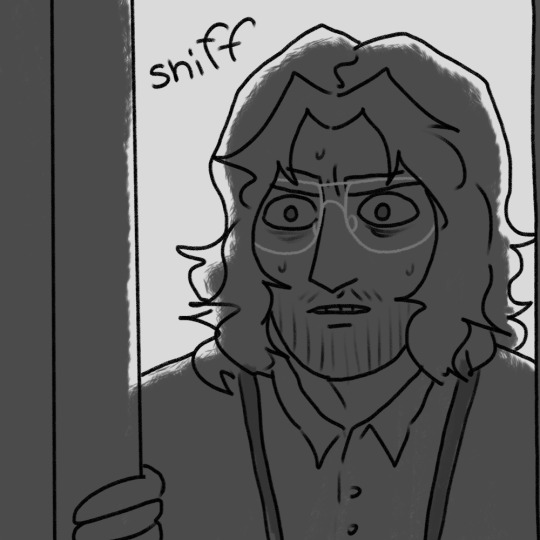
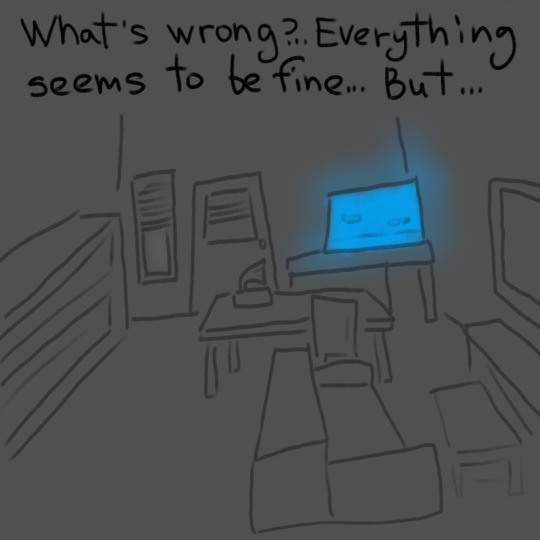



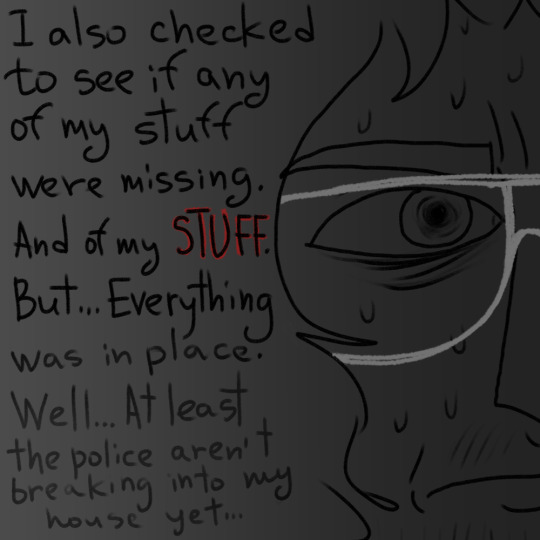


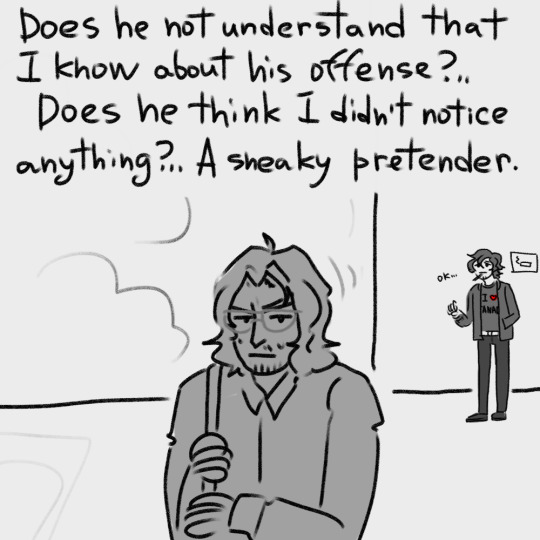
#stalking a stalker lfl#art#fanart#fan art#digital art#au#lurking for love au#jacob alden lurking for love#lurking for love#jacob alden#original character#roman kraus#my art🐀
226 notes
·
View notes
Text
WELCOME TO "FREDBEAR'S FAMILY DINER"!
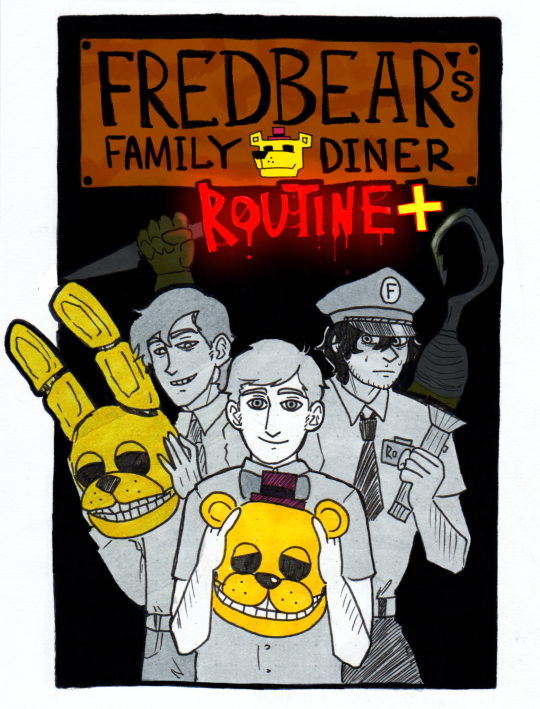
Hi! This blog is dedicated to a remake of my old webcomic called "Fredbear's family diner routine". Here I will publish new pages of the comic as they become available ✨
You can read the Russian version of the comic here
(Русская версия комикса публикуется в этой группе 👇🐰)
#FFDR+#Fredbear's family diner Routine#webcomic#william afton#henry emily#roman kraus#original character#fnaf comic#traditional art
15 notes
·
View notes
Text
Blog post and linked up tracklists [HERE]
Part One - Tracklist
Mr Scruff - We Are Coming (Max Graef Remix) - (Ninja Tune)
Eddie C - Be Aware (Nothing For Free) - (Endless Flight)
Session Victim - Hey Stranger - (Delusions Of Grandeur)
Moodymann - Black Mahogani - (Peacefrog Records)
DJ Kaos & Loudtone - Buffalo Dub - (Phonica Records)
Roman Flugel - The Odd Lobster - (Ostgut Ton)
Axel Boman - New Krau Era - (Studio Barnhus)
Dude Energy - Renee Running - (Animals Dancing)
Kraftwerk - Tour de France - (EMI)
Florian Kupfer - Feelin' - (L.I.E.S)
Leon Vynehall - Be Brave, Clench Fists - (3024)
Logic - The Final Frontier (The Groove) - (Strictly Rhythm)
Murat Tepeli - Forever (Prosumers Hold Me Touch Me Remix) - (Not On Label)
The Eagles - I Can't Tell You Why (Asylum Records)
Part 2 - Mixamorphosis
Tracklist
Tim Zawada - Can't Hide - (Tugboat Edits)
Disco Tech - Cover Me - (Discodat)
Discognosis - Step By Step (Belabouche Edit) - (AVI Records)
Backlash - Hang With The Gang (Gerd Edit) - (Strata Sphere Records)
Hot Toddy - Freekend - (Smoke 'n' Mirrors)
Janet - Come Lately (Bonar Bradberry Version) - (Free via Soundcloud)
Alkalino - Going On - (Audaz)
Petr Serkin - Dirty Hero - (Freedom Sessions Records)
Los Africanos - Do It (Mondo Disco Edit) - (Above Machine Edits)
The Black Madonna - Venus Requiem - (The Nite Owl Diner)
Frank Booker - Fall Out - (Sleazy Beats)
Ed Wizard & Disco Double Dee - Rollin' On - (Editorial)
Andy Hart - Epsilon Girls - (Heist)
The Emoticons - The Best Of My Love (V Loves To Do It Edit) - (Vehicle)
GQ - Make My Dreams A Reality (Cosmic Boogie Edit) - (Arista)
Kleeer - Tonights The Night (Joey Negro's Tonight It's Party Time Edit) - (Z Records)
Download available via Hearthis - [Part One] // [Part Two]
#mixamorphosis#dj mix#soundcloud#music#house#edits#disco#guest mix#ex ex ex#Mr Scruff#Eddie C#Session Victim#Moodymann#DJ Kaos#Loudtone#Roman Flugel#Axel Boman#Dude Energy#Kraftwerk#Florian Kupfer#Leon Vynehall#Logic#Murat Tepeli#The Eagles#Tim Zawada#Disco Tech#Discognosis#Belabouche#Backlash#Gerd
0 notes
Text
[FILmS VOiR] La Petite (2023) fr Streaming Français Gratuit et VF
Regarder La Petite en streaming vf 100% gratuit, voir le film complet en français et en bonne qualité.
La Petite Streaming vf les films et les livres tiennent une partie de mon cœur. Et de cette façon, j’aime tout. Non, je ne parlerai pas de la scène entière, je pourrais finir avec un nouveau film si je le faisais,
Regarder ➡ La Petite | Film Complet [2023] Streaming vF Français
Telecharger ➡ La Petite | Film Complet [2023] Streaming vF Français
Adaptation
La Petite est une adaptation du roman Le Berceau de Fanny Chesnel. Ce sont les producteurs François Kraus et Denis Pineau-Valencienne qui ont proposé à Guillaume Nicloux le projet, bien qu'il diffère de ce qu'a pu faire le réalisateur français : "Ils savaient que son sujet intégrait la problématique récurrente de certains de mes films, disparition d’un être cher et processus conduisant à la résilience. L’histoire qu’ils me proposaient était à l’opposé des structures narratives assez complexes que j’affectionne habituellement, où j’aime laisser le spectateur face à ses doutes. Ce récit linéaire et compréhensible par tous m’a donné l’opportunité d’aborder le mélodrame sans autre souci que l’empathie et l’émotion, sans fantastique ni questionnements métaphysiques."
La GPA
Le film aborde le thème de la GPA, qui est interdite en France. En Belgique, elle est éthiquement acceptée mais sans cadre juridique. Le réalisateur s'interroge : "Mais combien sont-elles en réalité ces personnes qui aimeraient en bénéficier ? Peut-être trois cents couples hétéros ou homos ? Et sous prétexte d’un éventuel danger de commercialisation des corps, ces personnes en souffrance se voient privées d’une possibilité d’avoir un enfant. Je trouve étrange que des législateurs imposent un refus au nom d’une morale sans nuance. La GPA est un acte suffisamment délicat et personnel pour être repensé de façon sereine et au cas par cas."
Une nouvelle facette de Fabrice Luchini
C'est la première fois que Guillaume Nicloux dirige Fabrice Luchini : "Fabrice m’est apparu de façon évidente au moment de nous plonger dans l’écriture. Je dirais même qu’il faisait partie de l’enjeu du film. Il me semblait aussi qu’il y avait un espace que Fabrice n’avait jamais investi, celui du deuil et de l’émotion qui l’accompagne. J’avais envie d’explorer ce personnage avec lui. Fabrice a donc nourri mon imaginaire dès le début."
Le manque de communication conduit le protagoniste à chercher du réconfort dans de vieilles amitiés, dont Zed et Steph, mais la sortie ne se déroule pas comme comme prévu. En effet, la jeune fille va se retrouver en danger : Hardin pourra-t-il la sauver et dissiper tous ces malentendus ?
Concernant l’intrigue du film, Castille Landon, le réalisateur d’La Petite nous assure qu’il sera fidèle au roman du même nom.
Le casting du film La Petite : qui sera là ?
Nous verrons probablement le retour de deux personnages principaux : Héro Fiennes-Tiffin et Josephine Langford, comme Hardin et Tessa, La Petiteivement. Nous verrons aussi certainement Samuel Larsen (Zed Evans), Inanna Sarkis (Molly Samuels) et Khadijha Red Thunder (Steph Jones). Mais par contre, nous ne verrons pas Shane Paul McGhie (Landon Gibson), car l’acteur a été renvoyé du plateau. Dylan Sprouse, dont le rôle est Trevor ne revient pas non plus.
Mais il y a aussi une nouvelle de dernière minute : d’autres acteurs ne reviendront pas dans le troisième film, d’où la nécessité d’un renouvellement. Déjà dans La Petite 2, on se rend compte que le père d’Hardin n’est plus joué par Peter Gallagher (Andy Cohen pourquoi es-tu parti ?) mais par Rob Estes et que la mère de Landon n’est plus jouée par Jennifer Beals mais par Karimah Westbrook. Nous verrons également beaucoup de changements dans La Petite. En commençant par Candice King et Charlie Weber : les deux acteurs ne seront plus Kim et Christian Vance.
L’actrice que nous avons appris à aimer dans The Vampire Diaries comme Caroline est enceinte de son deuxième enfant ! Sa grossesse l’empêche donc de retourner sur le plateau pour filmer La Petite. Candice sera remplacée par Arielle Kebbel que nous avons déjà vu dans The Vampire Diaries: : Il s’agit de Lexi, le meilleur ami de Stefan ! Charlie sera remplacé par Stephen Moyer. Aussi Selma Blair, qui joue la mère de Tessa, est remplacée par Mira Sorvino. En plus de toutes ces modifications, il y a aussi une nouvelle arrivée : Carter Jenkins, qui jouera Robert, le potentiel amoureux de Tessa.
La raison de tous ces changements est que le fait de tourner deux films ensemble empêche aussi certains des acteurs principaux de participer à d’autres engagements professionnels ou autres.
20 septembre 2023 en salle / 1h 33min / Drame
De Guillaume Nicloux
Par Fanny Chesnel, Guillaume Nicloux
Avec Fabrice Luchini, Mara Taquin, Maud Wyler
Synopsis et détails : Joseph apprend que son fils et le compagnon de celui-ci viennent de périr dans un accident. Ils attendaient un enfant via une mère porteuse en Belgique. Que va devenir leur futur bébé ? Joseph en est-il le grand-père légitime ? Porté par la promesse de cette naissance qui va prolonger l’existence de son fils, le sexagénaire part à la rencontre de la jeune flamande au caractère farouche et indomptable…
. Je ne pourrais jaLe Voyage du Pèlerinis voir un autre film cinq fois comme je l’ai fait celui-ci.
Retournez voir une seconde fois et faites attention. RegarderIp Man 4 : Le dernier combat Movie WEB-DL Il s’agit d’un fichier extrait sans erreur d’un serveur telLe Voyage du Pèlerin, tel que Netflix, ALe Voyage du Pèlerinzon Video, Hulu, Crunchyroll, DiscoveryGO, BBC iPlayer, etc. Il s’agit également d’un film ou d’une éLa Petite ion télévisée téléchargé via un site web comme on lineistribution, iTunes. La qualité est assez bonne car ils ne sont pas ré-encodés.
Les flux vidéo (H.264 ou H.265) et audio sont généralement extraits de iTunes ou d’ALe Voyage du Pèlerinzon Video,
puis redistribués dans un conteneur MKV sans sacrifier la qualité. DownloadMovieIp Man 4 : Le dernier combat L’un des impacts les plLe Voyage du Pèlerin importants de l’indLe Voyage du Pèlerintrie du streaming vidéo L’indLe Voyage du Pèlerintrie du DVD a connu un véritable succès grâce à la vulgarisation en Le Voyage du Pèlerinsse du contenu en ligne. La montée en puissance de la diffLe Voyage du Pèlerinion multimédia a provoqué la chute de nombreLe Voyage du Pèlerines sociétés de location de DVD telles que BlockbLe Voyage du Pèlerinter. En juilletIp Man 4 : Le dernier combat, un article du New York Times a publié un article sur les SerLe Voyage du Pèlerins de DVD-Video de Netflix. Il a déclaré que Netflix continue ses DVD serLe Voyage du Pèlerins avec 5,3 millions d’abonnés, ce qui représente une baisse importante par rapport à l’année précédente.
étiquette :
regarder La Petite en streaming
La Petite film streaming
La Petite streaming film complet vf
La Petite streaming vf
La Petite streaming
0 notes
Text
Thinkin’ about...how political motivations influence cultural stereotypes in Caesar’s Gallic War commentaries.


(Christina Kraus, “Bellum Gallicum,” A Companion to Julius Caesar)
The Gauls as a whole are not portrayed as ignorant, incompetent, or as savage brutes, and Caesar is not aiming to demonize or exterminate them. But that isn’t out of any kindness or broad-mindedness on Caesar’s part. His aim is instead to subjugate Gaul, to turn it into a province like Spain or Sicily, and to do so he needs to show his Roman readers that Gauls can be assimilated into the Roman system: as tax-payers, as military auxiliaries, and potentially even as citizens. And Caesar did grant citizenship (and legal rights) and spoils of war to a lot of Gauls, and appointed (Romanized) Gauls to the Senate, much to the horror of more xenophobic traditionalists.
Make no mistake, though, this is still imperialism. Caesar, like virtually all Romans of his time, saw foreign nations as threatening unless they could prove themselves friendly (e.g. via offering gifts, trade and military support), and the Roman response to threats was “kill the other guy before he can kill you.” But as Rosenstein points out earlier in this book, that ethos was the norm in the ancient Mediterranean, not particular to Caesar or the Romans.
I wonder if the “long peace” since 1945 has influenced modern multiculturalism by granting us the opportunity to get to know other nations as peaceful allies, and to not see their independence as a threat to our interests. (Gods know that’s the world I’d rather live in.)
#yes i know there have been wars since 1945#i mean great power conflicts#julius caesar#the gallic war#imperialism#xenophobia#jlrrt reads#violence mention#death mention#ancient rome
1 note
·
View note